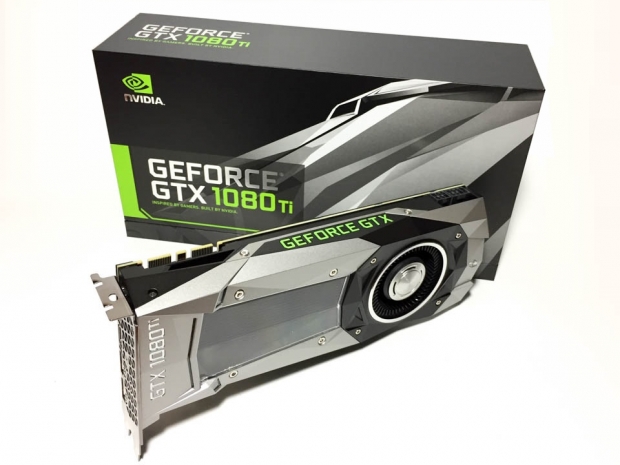Index
- Nvidia Geforce GTX 1080 Ti review
- GPU and memory overview
- Specifications, packaging and hardware overview
- Test Setup
- Results – Nvidia Vulkan API demo
- Results – Cinebench R15
- Results – Civilization VI
- Results – Just Cause 3
- Results – No Man's Sky
- Results – Far Cry 4
- Results – 3DMark + Time Spy
- Results – Unigine Heaven 4.0 Benchmark
- Overclocking
- Conclusion
- All Pages
Test setup
For this particular review, we are testing the Geforce GTX 1080 Ti on a system running an Intel Core i7 5930K at 3.70GHz, an EVGA X99 Classified motherboard, 16GB of Kingston HyperX Predator DDR4 2800MHz memory, an EVGA SuperNOVA 750 G2 PSU, and a Corsair Carbide Air 540 gaming case. The system was operating in a room temperature environment with the side panels off. The CPU was cooled using a Thermalright TRUE copper heatsink with two Noctua fans, while the case was cooled with five Corsair case fans.
All benchmarks were completed using Geforce 378.78 drivers on Windows 10 Pro x64 version 1607 with an LG 27UD68 IPS 3840x2160p monitor. Aside from GTX 1080 Ti Founders Edition that Nvidia sent for review, we have included three other cards into the mix for comparison – an EVGA Geforce GTX 1080 FTW Hybrid Gaming, a Geforce GTX 1070 Founders Edition, and an EVGA Geforce GTX 970 SC ACX 2.0.
Two passes – base clock vs overclocked specs
In the first run, all cards in the Geforce 10 series were clocked down to default specifications, while the Geforce 9 series card (GTX 970 SC) remained at a slight 11 percent overclock. In the second run, all cards were overclocked – the GTX 970 SC at 11 percent, the GTX 1070 at 38 percent (2075MHz core, 4519MHz memory), the GTX 1080 FTW Hybrid at 7 percent (1721MHz core, 1860MHz memory), and the GTX 1080 Ti at 30 percent (1923MHz core, 6180MHz memory).
For our software benchmarking tests, we used the Nvidia Vulkan API demo called ThreadedRenderingVk that simulates an aquarium full with schools of fish, along with Cinebench R15.038 (OpenGL), Unigine Heaven Benchmark (DX11), and Futuremark’s 3DMark with Time Spy (DX12).
For our gaming benchmark tests, we tried to pick a decent selection of DirectX 12 titles to fully make use of the asynchronous compute capabilities of these cards. These include Civilization VI, Battlefield 1 and Just Cause 3 (certain features operating under DX 11.3). For comparison, our two reference titles include Far Cry 4 (DirectX 11) and No Man’s Sky (OpenGL).




